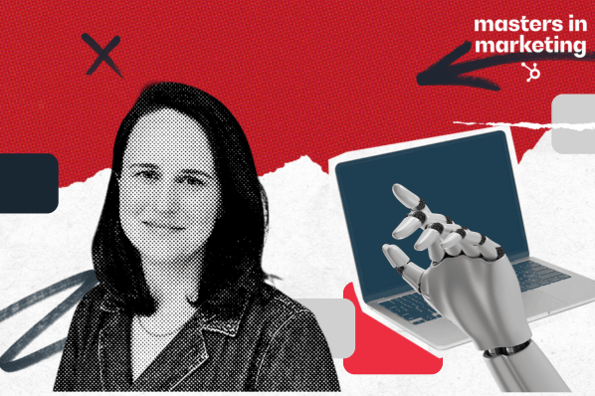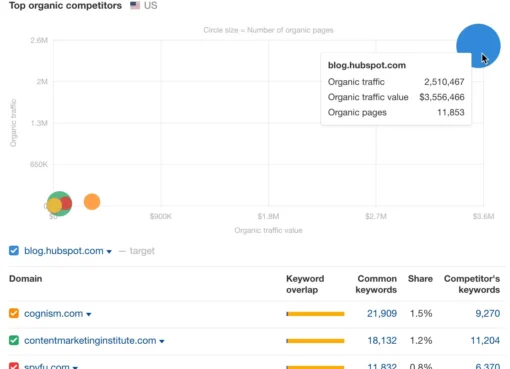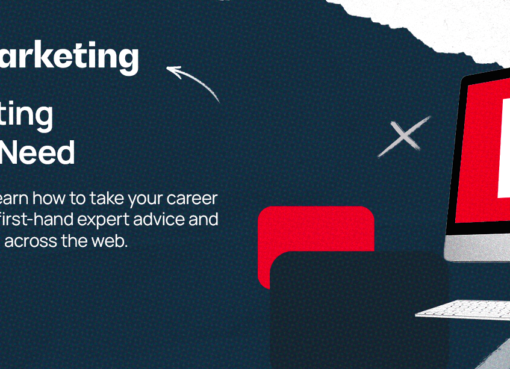“An obsession with quality” is what I wish 12-year-old me had… but alas, I ended up with boatloads of Forever 21 T-shirts.

As it turns out, quality really does matter. Our master today — Emily Kramer, a marketer, investor, and advisor for B2B growth-stage startups (and MKT1 newsletter creator) — told me her “obsession with quality” is the reason she’s been so successful in the newsletter space. (With 48k subscribers and growing.)
Want to learn more? Keep reading to learn how the MKT1 newsletter creator “never misses”, and her advice for any marketers who are the “first-ish” marketing leaders at their companies.

Why the creator of the MKT1 newsletter “never misses”.
1. Be ready to tell leaders what you’ll stop, start, and continue.
Kramer has been the “first-ish” marketer four times at companies ranging from 10 to 300 employees, so my first question was an easy one: If you’re the first marketer at a company, where the heck should you start?
Kramer told me whether you’re a team of one or leading a 200-person marketing department, the answer is the same: Prioritize, prioritize, prioritize.
“First, you need to figure out where you can win. Where can you stand out? Where do you have the biggest advantage over competitors? What channels make the most sense for your business?”

This translates to: Stop doomscrolling through TikTok for “inspiration” or convincing yourself a snazzy newsletter giveaway will save the day. Start with what matters most.
“You’ve got to have a framework for how you’re prioritizing — you have to put a stake in the ground about what you think is important, and why. If you don’t, you’ll just get barraged with requests.”
One of Kramer’s go-to moves when joining a new company is to create a “start, stop, continue” plan. That way, execs can quickly see, “Oh, we already tried that,” or “We’re stopping this, and here’s why.”
Otherwise, your founder might just get a little too obsessed with the idea of you publishing ebooks on Amazon as the “next best marketing move.”
(Not speaking from experience or anything.)
2. To sell marketing to execs, compare it to the product team.
“The biggest challenge in my career has been selling marketing. Early in my career, I didn’t understand the delta between what I understood about marketing, and what founders or other teams knew about marketing,” Kramer says.
I feel her: As someone who comes from a family of salespeople, I spend most of my Thanksgiving dinners trying to explain that brand awareness is still a valuable outcome.
Luckily, Kramer’s landed on a metaphor that seems to work: She likes to tell founders and execs that marketing teams are like product teams… Not sales.
A few key similarities: Both product and marketing are multidisciplinary; both have a portfolio of ideas and a roadmap of the big things they plan to do; and both require a balance of optimizing certain features/campaigns — while launching new ones — in order to help the biz grow.
Kramer also encourages marketers to make sure they know exactly what their founders think marketing is.
“During the interview process, just ask the founder, ‘Hey, when you think of what marketers do, what’s top of mind?’ Because what if they respond and say ‘trade shows,’ and you hate trade shows?”
Her point is a simple but sound one: Make sure your vision of marketing aligns with your founder’s, or get ready for a long road of pushback and a lot less creative freedom.
3. Don’t create a newsletter if you don’t have anything interesting to say.
Kramer’s MKT1 newsletter success hinges on one question: “Would I text this piece of content to everyone I know that’s in the space?”
Kramer’s obsession with quality is evident in her newsletter cadence: While many marketers like to send newsletters out on a weekly or even daily basis, Kramer prefers to send hers roughly 2X per month. She only wants to send a newsletter if it’s saying something new.

“People tell me ‘I never miss’ with my newsletter — I don’t know if that’s true,” she adds with a wry grin. “I definitely miss. But that obsession with quality is there.”
And she has some wise words for anyone who wants to create their own: “If you don’t have a storyline that you can talk about in a unique, engaging way — better than everyone else — you shouldn’t do it. You can’t just say, ‘I want to start a newsletter’ and then stick content into it. It doesn’t work that way.”







![What is B2C Marketing? [+ New Data & Trends to Captivate Audiences in 2025] what-is-b2c-marketing?-[+-new-data-&-trends-to-captivate-audiences-in-2025]](https://blog.contentkrush.com/wp-content/uploads/2025/01/140852-what-is-b2c-marketing-new-data-trends-to-captivate-audiences-in-2025-510x369.jpg)




![How to Boost a Post on Social Media [Instagram, Facebook, and Twitter] how-to-boost-a-post-on-social-media-[instagram,-facebook,-and-twitter]](https://blog.contentkrush.com/wp-content/uploads/2025/02/140919-how-to-boost-a-post-on-social-media-instagram-facebook-and-twitter-510x369.webp)





![New Marketing Jobs That Focus on AI [Data + Examples] new-marketing-jobs-that-focus-on-ai-[data-+-examples]](https://blog.contentkrush.com/wp-content/uploads/2024/09/140151-new-marketing-jobs-that-focus-on-ai-data-examples-510x369.webp)

![Marketing Budget: How Much Should Your Team Spend in 2024? [By Industry] marketing-budget:-how-much-should-your-team-spend-in-2024?-[by-industry]](https://blog.contentkrush.com/wp-content/uploads/2024/04/133204-marketing-budget-how-much-should-your-team-spend-in-2024-by-industry-510x369.jpg)
![How to Write a Blog Post: A Step-by-Step Guide [+ Free Blog Post Templates] how-to-write-a-blog-post:-a-step-by-step-guide-[+-free-blog-post-templates]](https://blog.contentkrush.com/wp-content/uploads/2024/08/140121-how-to-write-a-blog-post-a-step-by-step-guide-free-blog-post-templates-510x369.webp)

![How to Write a Video Script [Template + Video] how-to-write-a-video-script-[template-+-video]](https://blog.contentkrush.com/wp-content/uploads/2024/03/131395-how-to-write-a-video-script-template-video-510x369.jpg)









Comment here